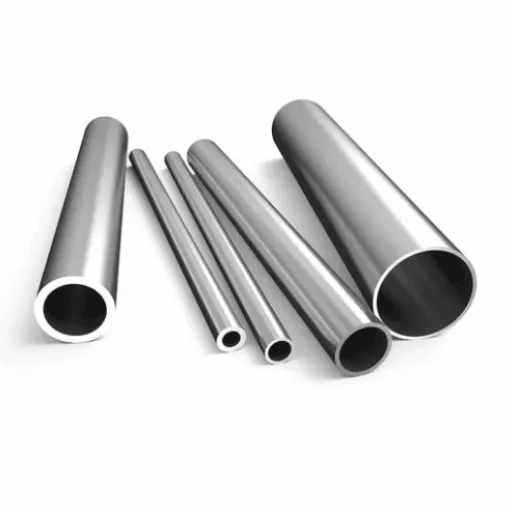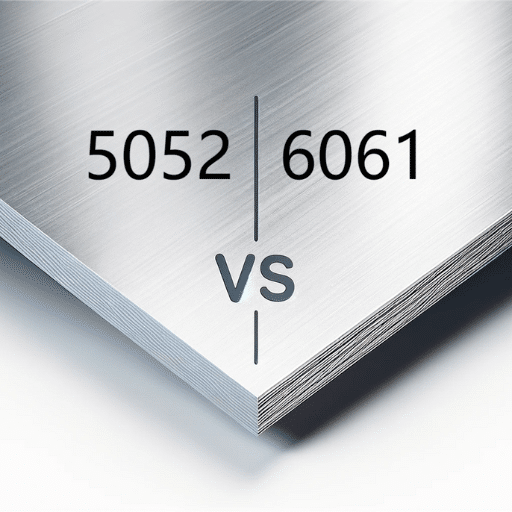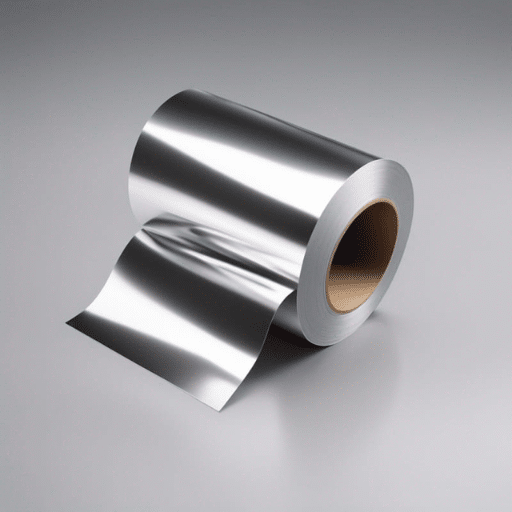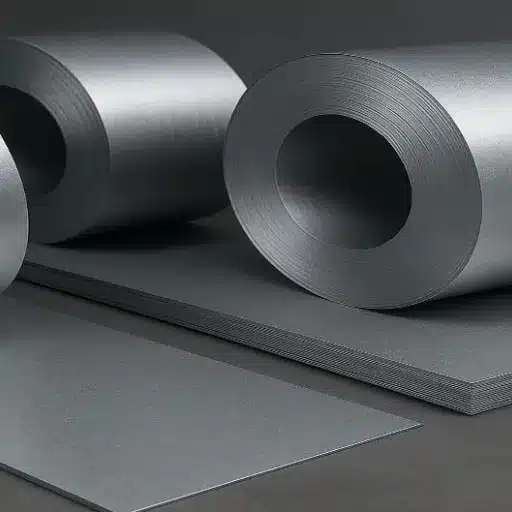When selecting materials for industrial, architectural, or commercial applications, the choice of metals can significantly impact performance, durability, and cost. Among the most common options are stainless steel and duplex stainless steel, both of which offer unique properties suited to a range of environments and demands. But what sets these two types of steel apart, and how do you determine which one is best suited for your specific requirements? This article dives deep into the structural, chemical, and mechanical differences between stainless steel and duplex stainless steel, equipping you with the knowledge to make informed decisions for your projects. Whether you’re focused on corrosion resistance, strength, or cost-efficiency, understanding these distinctions is critical to optimizing outcomes.
What is Duplex Stainless Steel?

Characteristics of Duplex Stainless Steel
Duplex stainless steel is one of a kind alloy as it has features of both austenitic and ferritic stainless steels. Its composition normally consists of balanced microstructure including approximately equal parts of ferrite and austenite, which makes it sturdiest and more resistant to stress corrosion cracking. This dual-phase structure makes duplex stainless steel stronger than other stainless steels in demanding applications, particularly in environments with high exposure of chlorides.
Outstanding characteristics of duplex stainless steel are its unparalleled strength against corrosion. It has a pitting and crevice corrosion attacking resistance, especially to chlorides which makes it an ideal option for marine, chemical processing, oil and gas industries and many others. Moreover, due to its controlled alloying of chromium, molybdenum, and nitrogen, it is more effective in general corrosion than many standard stainless steels.
Looking at it from a mechanical perspective, duplex stainless steel offers higher strength than both ferritic and austenitic grades. This means it can structurally perform within thinner materials. This strength-to-weight ratio is useful when trying to reduce costs and improve efficiency during large-scale undertakings. Combined with remarkable weldability and durability, duplex stainless steel is considered dependable and innovative where sustained toughness and low maintenance is required.
Applications of Duplex Steel in Industry
Because of its ability to withstand stress, corrosion, and other taxing conditions while remaining cost-effective, duplex stainless steel is used in very demanding industries. One of its primary applications is in the chemical and petrochemical industry for the manufacture of storage tanks, heat exchangers, and other pressure vessels. It is very useful for aggressive environments containing hostile chemicals, like chlorides and acids, because of its resistance to stress corrosion cracking and pitting. Its Application ensures enhanced operational safety and prolonged service life even in harsh conditions.
Another critical area of application is the oil and gas industry, which relies on duplex stainless steel for construction and maintenance of subsea oil pipelines. Due to its excellent mechanical properties alongside long-term endurance under extreme pressures and temperatures, duplex steel is deployed in offshore platforms, subsea pipelines, and oil refineries. Exposed to seawater, the steel requires little maintenance attention, which fosters operational efficiency and lowers operational costs in demanding marine environments.
Duplex stainless steel is also very useful for the construction and desalination industries. It is used for bridge reinforcements, structural frameworks, and water treatment plant constructions. Its dual-phase microstructure gives it best load-bearing properties and resistance to corrosion which suits large infrastructure projects in damp and saline conditions. Hence, duplex steel proves to be very economical, reliable, and a long-term solution for many industries.
Advantages of Using Duplex Stainless Steel
- High Strength and Durability:Duplex stainless steel exhibits higher mechanical strength than conventional grades of austenitic and ferritic. Its dual-phase microstructure that incorporates the best features of both phases allows it to resist enormous mechanical stress. This property makes it ideal for heavy machinery components, offshore platforms and bridge structural reinforcements.
- Excellent Corrosion Resistance: As duplex stainless steel’s primary advantage, it shows great resistance to corrosion, especially in highly aggressive environments. It withstands pitting, crevice corrosion, and stress corrosion cracking in chloride or saline environments. These properties provide durability and reduce maintenance in water treatment, chemical processing, and marine construction industries.
- Cost Efficiency and Sustainability: Though performing exceptionally, duplex stainless steel can be more economical in the long run compared to other materials. Its greater strength results in a reduction in material thickness which lowers cost of material and fabrication. Its long life, resistance to wear and low maintenance increase savings on replacement and repair costs. In contemporary engineering practice, the fact that duplex stainless steel is recyclable makes it eco-friendly and sustainable.
These features together make duplex stainless steel an important material for many high performance and sustainable uses in industry and infrastructure.
How Does 2205 Stainless Steel Compare?
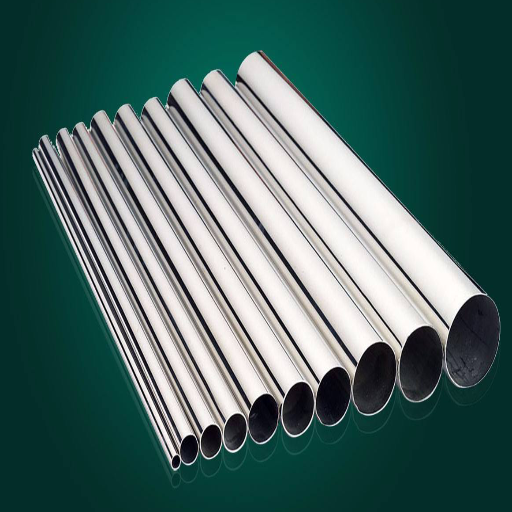
Features of Duplex 2205
Duel 2205 stainless steel is of particular interest because of its noteworthy strength, cost effectiveness, as well as its resistance to corrosion. Alloy of duplex-grade, Duplex 2205 is nitrogen enhanced and comprises of an approximately equal amount of ferrite and austenite (50%) each. Dual-phase composition provides greater mechanical properties — yield strength of duplex is about double than austenitic stainless steels like 316L, 304 which makes it suitable for high-integrity structures.
Stress corrosion cracking (SCC) has one of the most remarkable resistant features which is made even better in the presence of chloride ions. Due to exposed harsh conditions, these made Duplex 2205 favorable for oil and gas, marine, and chemical processing industries. Moreover, due to its chromium, molybdenum, nitrogen content, with PREN exceeding 35, it has great resistance to pitting along with crevice corrosion.
Compared to austenitic grades, Duplex 2205 has much less thermal expansion while having much greater thermal conductivity. Those along with high structural integrity make it favorable for vessels, storage tanks, and heat exchangers that operate in high temperatures. Advanced thermal properties endorse the use of this alloy.
Moreover, the material exhibits increased fatigue strength and wear resistance, important for rotating or cyclically loaded parts in harsh operating environments. In addition, Duplex 2205 is a more affordable alternative due to the lower nickel content without compromising performance, particularly when comparing austenitic stainless steels.
These attributes, along with its favorable response to welding and fabrication techniques, proper methods further strengthen the combination of adaptability required, place Duplex 2205 as a dynamic stainless steel with high strength attributes across numerous industries.
Comparison with 316 and 304 Stainless Steel
While 304 is more affordable and appropriate for general use, 316 stainless steel has superior resistance to corrosion, particularly in marine and chemical settings, because of its composition of molybdenum.
|
Aspect |
304 SS |
316 SS |
|---|---|---|
|
Rust Resist. |
Good |
Excellent |
|
Expense |
Lower |
Higher |
|
Toughness |
Moderate |
Higher |
|
Thermal Perf. |
Moderate |
Better |
|
Core Alloy |
Cr, Ni |
Cr, Ni, Mo |
|
Uses |
Domestic |
Industrial |
|
Longevity |
Standard |
Extreme |
|
Salt Resist. |
Moderate |
High |
Exploring Grades of Duplex Stainless Steel

Common Duplex Stainless Steel Grades
Due to their distinct chemical compositions and performance characteristics, duplex stainless steels are subdivided into numerous industrial grades. Below are some of the most commonly utilized grades:
- Duplex 2205: Most consider Duplex 2205 as the most versatile and popular among the duplex variations and for good reason. Its composition containing around 22% chromium, 5% nickel, and 3% molybdenum allows Duplex 2205 to withstand chloride stress pitting and generally exhibit corrosion resistant properties. Moreover, it provides high yield strength and robust mechanical properties across a wide range of environments. The marine, oil and gas, chemical processing industries frequently utilize the cost-effective durability provided by this grade.
- Super Duplex 2507: With even higher corrosion resistance and mechanical strength, Super duplex 2507 was designed to meet the needs of extreme conditions. This grade tends to have higher amounts of chromium (25%), nickel (7%), and molybdenum (4%) than it’s Duplex 2205 counterpart. Because of these factors, Super Duplex 2507 is best suited for harsh and highly corrosive environments like subsea pipelines, and equipment which handle aggressive chemicals. The increased performance does come at a higher cost, meaning this grade is best suited for the most severe use cases.
- Lean Duplex Grades: Discussions on lean duplex grades such as 2101 and 2304 show that they are designed with lower amounts of nickel and molybdenum, which makes them an economical option compared to 304 or 316 stainless steel. However, the corrosion resistance and structural strength of these grades remains superior. For storage tanks and architectural components, these grades are ideal because they do not require significant moderation in cost or resistance to corrosion.
- Ferritic-Austenitic Duplex Stainless Steel: Some of the earliest developed duplex stainless steels are shown in grades such as 329. Though not as common today, their high thermal conductivity and resistance to oxidation at elevated temperatures makes them optimal for use in furnaces and other heat exchanger applications.
From advanced welding and heat treatments to fabrication, the cruelest conditions tested in the harshest environments warrant precision engineering. Each of these grades are tailored to specific operational needs, which propels pliability in materials used with duplex stainless steel.
Benefits of Super Duplex Grades
- Unmatched Resistance to Corrosion:
The reason super duplex grades can resist both uniform and localized corrosion, including pitting and crevice corrosion is due to their high chromium, molybdenum, and nitrogen content. This means that super duplex stainless steel grades, such as UNS S32750, are apt for marine engineering, chemical industry, and oil and gas because these parts endure tough environments and so these steels do not suffer chloride stress corrosion cracking.
- High Strength-to-Weight Ratio:
Composed of ferritic alloys and austenitic alloys, these materials have a one of a kind duplex microstructure. As a result of this, super duplex stainless steel, grade UNS S32760 has yield strength which doubles that of austenitic stainless steels; super duplex also have higher ratioof strength to weight. Thinner, lighter parts without jeopardizing structural integrity can successfully be implemented due to engineers relying on these alloys.
- Ease of Welding:
Due to the optimal weldability in large scale job for harsh industries, super duplex grades are tailored for excellent weldability. With the right technique and materials, the weld achieved will not compromise resistance to corrosion or mechanical strength.
- Improved Resistance to Elevated Temperatures:
Super duplex stainless steels have outstanding mechanical and chemical properties at high temperatures, frequently maintaining their integrity up to 300°C (572°F). Their resistance to oxidation and loss of structural integrity under thermal stress safeguards their reliable functioning in high-temperature applications like heat exchangers and pressure vessels.
- Economical in Long-Term Operations:
Even though super duplex grades may be more expensive initially, the extended service life, coupled with reduced maintenance and operational costs over time greatly exceeds the initial investment. Super duplex’s harsh operational condition durability and resilience considerably minimizes the repair or replacement requirements throughout the component’s lifecycle, reducing the overall lifecycle costs.
Lean Duplex vs Standard Duplex
The main differences between lean duplex and standard duplex stainless steels are composition, mechanical properties, and uses. Lean duplex grades, as the term implies, have a lower alloying nickel and molybdenum content. This change in composition is designed to achieve cost reduction and still maintain sufficient level of strength and corrosion resistance for milder environments. Meanwhile, standard duplex grades have greater proportions of key alloying elements which makes them suitable for more aggressive conditions that require even greater resistance to pitting and crevice corrosion.
Mechanically, both the lean and standard duplex steels have the typical duplex microstructure comprising of a ferritic and an austenitic phase. With that said, lean duplex grades tend to provide lower tensile and yield strength as compared to the standards due to their lower alloying content. This microstructure is what gives standard duplex steels the advantage when subjection to high levels of stresses or harsh environments.
In real life, the choice between lean and standard duplex is based on specific operational and environmental factors. Lean duplex is commonly used in structures, water treatment facilities, and other areas with a severe cost restriction on performance. Standard duplex is better suited for chemical processes, offshore oil and gas industries, and marine settings, which are more demanding. In any case, the choice has to strike a clear balance between what is achievable from the material’s performance characteristics and the project’s financial and operational goals.
Understanding Corrosion Resistance in Stainless Steels

The Role of Chromium and Molybdenum
Molybdenum and Chromium are the two elements that add value to stainless steel due to their corrosion resisting properties. The elements help in the construction of a protective oxide layer, which aids in the accomplishment of subscribing to stern conditions.
- Chromium Content
Chromium’s main function is to add a passive layer that protects the outer surface of stainless steel. The layer, unlike other types, is prone to healing and acts as a strong defense system against oxy exclusion and general softening. While in stainless steels, the amount of chromium is typically more than 10.5%. In grades meant for highly corrosive conditions, it is found in the range of 16-20%
2.Molybdenum Addition
Molybdenum enhances the resisting capacities in stainless steel for certain types of softening such as pitting and crevice softening. These are most commonly found in Chloride rich regions. Most 316 and 317 grade molybdenum boosted stainless steels, incorporates 2-3% molybdenum. Burst of a few super austenitic and duplex grades hold additional 6% molybdenum.
- Oxidation Resistance
Molybdenum addition aids in superseding pitting and crevice corrosion, pitting, and other concentrated areas that contain chloride.
- Resitance against Stress Corrosion Cracking (SCC)
The addition of molybdenum reduces the detrimental effects of stress corrosion cracking within chloride solutions. It reduces the cracking ability of the material under tensile stress and harsh environmental conditions, which makes it important for chemical storage and piping systems.
These broad applications rely on the synergistic combined effects of chromium and molybdenum, permitting stainless steels to withstand a diverse range of aggressive industries such as food processing and offshore energy extraction.
Challenges with Pitting and Crevice Corrosion
Pitting and crevice corrosion continue to be problematic areas of concern for stainless steel applications, especially in areas compounded with chlorides. Pitting corrosion is defined as the presence of small, rounded holes, or pitting, on the surface of a given material, which is caused by the deterioration of the passive oxide layer. Conversely, crevice corrosion occurs in closed regions like gasket seals or under deposits where the protective surface layer cannot be reoxidized owing to limited access to oxygen.
Chloride ion concentration, temperature, and oxidation setter presence are some of the most potent variables controlling these forms of corrosion. For example, the presence of chlorides is detrimental in a concentrically increasing manner for pitting and crevice corrosion. The pitting resistance equivalent number, PREN, which represents the amount of chromium and molybdenum, and nitrogen content of the alloy, about its resistance to degradation, calculated through the alloy’s constituents, serves as a telling factor for material degradation. Different types of stainless steels have differing levels of PREN, with super duplex and austenitic grades having higher PREN and thus, excelling in more severe environments.
In order to meet these challenges, appropriate materials have to be chosen, design considerations have to be creates to reduce crevice formation, and maintenance policies like washing to prevent contamination accumulation have to be implemented. New approaches in engineering surface treatments and nanostructured coatings about local corrosion resistance have shown great prospects.
Strategies to Combat Chloride Stress Corrosion
Effectively reducing the risk of chloride stress corrosion cracking (CLSCC) in structural components involves a broad spectrum covering the right material choice and eco-friendly practices, as well as sophisticated precocious technologies. Apart from environmental monitoring, as one of the main approaches, the application of alloys with higher resistance, such as duplex or super duplex stainless steels, which, due to their microstructures, possess good mechanical properties and increased resistance to chloride cracking, needs to be adopted. Moreover, non-carbonized austenitic stainless steels also tend to reduce sensitization and perform better in the long run when stabilized with elements like titanium or niobium.
Environmental factors also need to be controlled to mitigate CLSCC risks. These include keeping the sulfate quantity below a certain level, maintaining temperatures below the range under which stress corrosion cracking occurs, and ensuring pH is around neutral. There is a definite advantage in industrial processes from constantly monitoring these factors using sophisticated sensors and modern techniques that provide real-time analysis, so harmful conditions can be diagnosed early on.
Passed and advanced coatings and passive layers serve as a good defense against penetration by chlorides and can be used in surface modification. Techniques like electropolishing or the application of nanostructured coatings have been shown to significantly enhance resistance by reducing the initiation sites for corrosion and decreasing surface roughness.
Moreover, inspection and service care have to be planned and prioritized. Nondestructive testing (NDT) methods such as ultrasonic testing or eddy current inspections give complementary critical insights into the component’s structural integrity, assisting in early CLSCC detection before failures arise. Predictive maintenance models, bolstered by advanced data analytics and machine learning, promote inspection efficiency and eliminate unnecessary downtime.
Finally, strategies about ongoing research offer promising ulterior solutions. Some of them might include the devised hybrid materials of ceramics and metals or inhibitor chemistries that specifically focus on chlorides and CLSCC.
Comparing Stainless Steel vs Duplex Stainless Steel
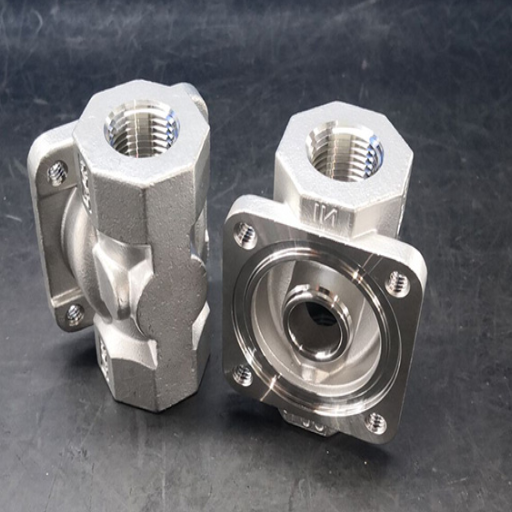
Differences in Microstructure and Composition
Different types of stainless steel have unique microstructures and compositions, including austenitic, which is FCC structured and contains active nickel, martensitic which is BCT structured with high carbon, and ferritic which has BCC structure with Chromium but little Nickel.
|
Type |
Structure |
Key Element |
Hardness |
Corrosion |
Magnetic |
|---|---|---|---|---|---|
|
Austenitic |
FCC |
Nickel |
Low |
High |
No |
|
Martensitic |
BCT |
Carbon |
High |
Moderate |
Yes |
|
Ferritic |
BCC |
Chromium |
Moderate |
Moderate |
Yes |
|
Duplex |
Mixed |
Cr, Ni, Mo |
High |
High |
Yes |
Impact on Yield Strength and Durability
The stainless steel’s yield strength and durability are profoundly affected by its microstructure and alloy compositions. Austenitic stainless steel funnels its FCC structure possesses relatively low yield strength compared to other types, but has excellent ductility and toughness, particularly at cryogenic temperatures. Thus, making it fit for applications where resistance to deformation is less critical, is caused to high stress fracturing is critical.
Martensitic stainless steel, on the contrary has a BCT structure and high carbon which makes it softer but increases yield strength. This combination enables its use in high stress applications like tool making or turbine blades where, durability and precision are critical. However, this comes at the cost of lower corrosion resistance compared to other types.
With a BCC structure, Ferritic stainless steel has yield strength moderatively increased with the addition of chromium. This augments the good corrosion resistance in mildly aggresive environments. It’s lower nickel content makes the ferritic stainless an economical alternative in magnetically active exhaust systems, as well as for industrial equipment.
The duplex stainless steels sandwiched between austenitic and ferritic structures, showcases striking corrosion resistance and robust yield strength. This is due to the alloy’s microstructure containing a mixture of chromium, nickel, and molybdenum. Properties like these enable duplex stainless steels to outperform standard grades in extreme environments like seawater desalination plants and chemical processing facilities.
Research cites that the duplex stainless steel possesses yield strength of up to 600 MPa whereas austenitic grades are around 200 MPa. Superior lasting durability, in particular long-term stress exposure to aggressive agents highlight duplex grades as the more competitive option for critical infrastructure applications.
Suitability for the Oil and Gas Industry
The combination of outstanding mechanical properties as well as corrosion resistance has made duplex stainless steel an important material for the oil and gas industry. It is used in offshore platforms, subsea pipelines, and processing facilities, which face high pressure, temperature, and corrosion from chlorides, hydrogen sulfide (H₂S), and carbon dioxide (CO₂), among other things. Enhanced pitting and crevice corrosion resistance in duplex grades such as UNS S32750 (super duplex) results in these superior materials being ductile, unlike conventional carbon steels and austenitic stainless steels (many super duplex grades have PREN values greater than 40).
Duplex stainless steels also have high yield strengths, which in the case of duplex grades is frequently double that of standard austenitic stainless steels. The yield strength results in thinner pipes and structural components being used, which decreases weight and increases cost efficiency in expansive projects. Fatigue strength is another defining feature important to dynamic operations in the oil and gas industry, and, based on empirical testing, duplex stainless steels outperform in cyclical loading conditions, like drilling risers or flowlines, cohesive with them.
Also, the development of newer alloy combinations and heat treatment processes has improved older maintenance concerns with duplex stainless steel weldability. Along with older steel types, this development emphasizes its usefulness in dual-phase steels for the construction of complex structures in critical infrastructure.
Statistical data across the globe justifies the use of duplex stainless steel in major oil field developments. For example, in the North Sea, offshore drilling projects have for over 30 years successfully used duplex components that offered extended service life under severely harsh environmental conditions. This further serves to illustrate the alloy’s effectiveness as a value solution specifically designed for the demanding conditions of the oil and gas industry.
References
- Duplex stainless steels overview – A detailed academic paper discussing duplex stainless steels.
- Austenitic, Duplex, and Lean Duplex Stainless Steel Critical Pitting Temperature in Simulated Concrete Environment – Research on the critical pitting temperature of various stainless steel types.
- Thermal treatment and properties relationship with brittle phases in duplex and superduplex stainless steels – A study on the thermal treatment and properties
Frequently Asked Questions (FAQ)
Q: What are the main differences between stainless steel and duplex stainless steel?
A: The main differences between stainless steel and duplex stainless steel lie in their microstructure and properties. Stainless steel typically includes a range of austenitic, ferritic, and martensitic grades, whereas duplex stainless steel is a combination of ferritic and austenitic stainless steel, offering enhanced strength and corrosion resistance properties.
Q: How do duplex stainless steels offer improved corrosion resistance?
A: Duplex stainless steels offer improved corrosion resistance due to their dual-phase microstructure, which combines the beneficial properties of ferritic and austenitic stainless steels. This structure enhances their performance in environments with corrosion and chloride exposure, making them more resistant to pitting and stress corrosion cracking than standard austenitic stainless steel grades.
Q: What are the commonly used types of duplex stainless steel?
A: Commonly used types of duplex stainless steel include duplex steel 2205 and 22%Cr duplex. These alloys are widely used due to their excellent strength and corrosion resistance properties, making them suitable for various industrial applications.
Q: What is the significance of ferrite and austenite in duplex stainless steels?
A: Ferrite and austenite are significant in duplex stainless steels because they contribute to the unique dual-phase microstructure. This combination results in enhanced mechanical properties, such as higher strength and toughness, as well as improved corrosion resistance compared to single-phase austenitic or ferritic stainless steels.
Q: Are there any concerns about galvanic corrosion between stainless steel and duplex stainless steel?
A: Galvanic corrosion between stainless steel and duplex stainless steel can occur when they are electrically connected in a corrosive environment. However, the risk is generally low due to their similar electrochemical properties. Proper material selection and design considerations can help mitigate any potential galvanic corrosion issues.
Q: How does hyper duplex stainless steel differ from other duplex grades?
A: Hyper duplex stainless steel differs from other duplex grades by offering even higher levels of strength and corrosion resistance. This is achieved through a more complex alloy composition, which provides superior performance in highly corrosive environments compared to standard duplex and super duplex stainless steels.
Q: Why are austenitic stainless steel grades like 304 and 316 less resistant to stress corrosion cracking than duplex stainless steels?
A: Austenitic stainless steel grades like 304 and 316 are less resistant to stress corrosion cracking due to their single-phase microstructure, which is more susceptible to this type of corrosion. In contrast, the dual-phase structure of duplex stainless steels provides improved resistance to stress corrosion cracking, making them more suitable for challenging environments.
Q: In what applications are stainless steel pipe and duplex stainless steel pipe typically used?
A: Stainless steel pipe and duplex stainless steel pipe are widely used in applications that require high corrosion resistance, such as chemical processing, oil and gas, and marine environments. While stainless steel pipe is common for general purposes, duplex stainless steel pipe is chosen for more demanding applications due to its superior strength and corrosion resistance.
Q: What role do stainless steel alloys play in the family of stainless steels?
A: Stainless steel alloys play a crucial role in the family of stainless steels by providing a range of properties tailored to specific applications. These alloys, including austenitic, ferritic, and duplex types, offer varying degrees of corrosion resistance, mechanical strength, and workability, allowing for versatile use across numerous industries.
Q: How does the composition of 316L stainless steel improve the corrosion resistance properties compared to other grades?
A: The composition of 316L stainless steel, which includes molybdenum, improves its corrosion resistance properties compared to other grades like 304. This enhancement makes 316L more effective in resisting pitting and crevice corrosion, particularly in chloride-rich environments, making it a preferred choice for marine and chemical applications.

